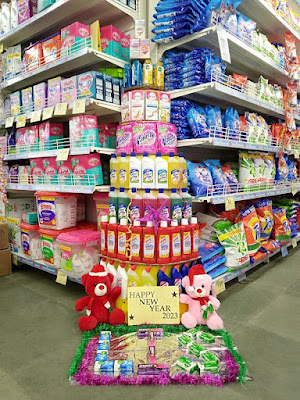Strategies to Drive Sales! Merchandising Edition
One of the most common reasons why brands fall behind their competitors is that customers change their minds based on what they see, learn, and do when they interact with products in the store. Follow these retail rules to strike a balance:
1. Think about the customer journey.
Customers want to interact with the product, and that interaction should add value to their experience before they buy the product. Service: Ask yourself: Does physical interaction with my products add to the in-store shopping experience? If it is a specific packaging component, make sure it appears on the shelf style the product is stored on. Why choose online shopping?
Forrester predicts that in the future, 72% of retail sales in the United States will take place in-store rather than online. Shoppers say they prefer online shopping because it's easy to test products (47%) and the ability to walk away immediately after buying (38%).
2. Support your product story
As online and mobile ordering grows, there is a shift in focus on product branding and storytelling. Even if you only sell in retail stores, you must recognize how the rise of omnichannel marketing and In-store merchandising has affected customer expectations. Shoppers at brick-and-mortar retail stores still expect the same level of knowledge and enjoyment that online stores provide. Use this as an opportunity to add a new dimension to your customer's shopping experience.
Make sure the small details of your packaging, brand displays, and product shelf placement contribute to the larger story you're creating through your online and social media presence. Example: Take a look at the Healthcare Kombucha packaging. Logo anchors are molded into the bottle at the top and bottom of the bottle, as well as the cap. Design product for the Ade Kombucha Health bottle
3. Understand why customers don't buy
This is correct. It's important to know what makes your customers happy and what makes them buy. But sometimes, it can be even more valuable to understand why customers don't buy. Are customers engaging more with off-the-shelf competitors because they need help getting the answer they need from the packaging, or are they dropping out of the buying cycle entirely? Answering these questions can help you eliminate gaps in your acquisition pipeline.
Services: Before changing your retail strategy, look at your product, packaging, and display strategy. Are they related? Need some fun? Rendition?
4. Premium shelf space savings
Sometimes, more is needed to go to a retail store. You may be doing well, but you know your product will be better if it's in a better place. You are right. A University of Chicago study found that vertically moving bottled juice from the worst place on the shelf to the best place increased sales by 79 percent.
Asking a seller to put you in a better position can be a big ask, but if you have a good product and the numbers to back it up, it can be worth it. Tactic: Look at market share versus shelf space share. If the shelf space quota is less than the market quota, take it to the seller and ask for more space or premium placement. illustration
5. Research retail trends
From 2019 to 2021, the average number of visitors to US stores fell by 36%, and fitness and apparel purchases slowed even more. It's easy to get stuck in your echo chamber, especially when you're running a business. How do you expect to satisfy your customers if you need to know what else you're competing against? Services:
- Learn what industry leaders are doing in retail.
- Start your Pinterest board with this fun POP display below.
- Browse our 2021 store for more inspiration.
6. Avoid selling
It might feel good to go to a retail store and see that a product is out of stock, but think again. 30% of OOS items are purchased from other stores. This means you are taking a portion of the potential sales, and the seller is losing sales as well. Frequent iterations of OOS can interrupt product deployments. Worse, it allows loyal customers to use competing products. Tip: If you need help with OOS issues, first make sure everything runs smoothly with the command table. Otherwise, if you cannot increase shipping or production, it is better to cut costs than to leave empty shelves at retail stores.


.webp)

Comments
Post a Comment